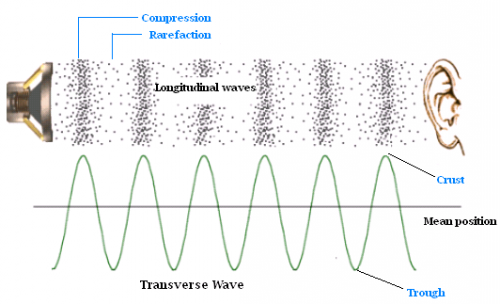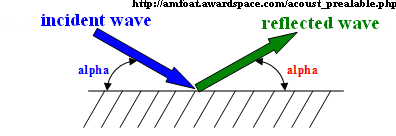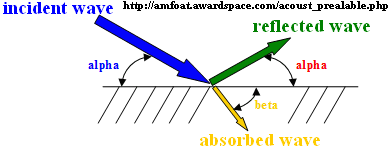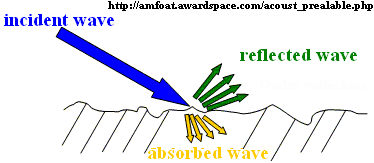Acoustics’ basics
For a better comprehension of our experiments and results, here are some simple basics of acoustics.
What is a sound?
A sound is composed of vibrations transmitted through an elastic solid, liquid or gas, with frequencies in the approximate range of 20 to 20,000 hertz, capable of being detected by human organs of hearing. A sound wave travels through the air or another medium making a pressure variation.
That is what happens when we speak. Our vocal cords vibrate and generate a high and low pressure variation in the air. The sound spreads in air at a speed of approximately 344 meters per second. Habitual speech average fundamental frequency ranges in 75–150 Hz for men and 150–300 Hz for women. Human ear can hear sounds with frequencies of vibration between 20Hz and 20000Hz.
Behavior of a sound wave
When a sound wave reaches an obstacle, four differents phenomenon happen, as described below :
- Reflection
A part of the wave is reflected by the obstacle, we call that echo or reverberation. A soundproof material has a surface made to reduce the reflection or to select useful reflections and unwanted ones.
- Transmission
A part of the incident sound wave is transmited through the mater. This is the phenomenon called acoustic isolation that makes a room soundproofed.
- Absorption
A tiny part of the incident wave is transformed in mechanical energy and in calorific energy. It occurs essentially at the surface of the obtacle. The angle beta depends on the material's preperties (absoption coefficient and thickness) and on the wave frequency.
- Diffusion
If the obstacle's surface is not smooth, the incident wave is reflected in several smaller waves. each bump is acting as a different wall for the sound wave.
Why does a porous material absorb better?
By reaching a porous material, the sound wave can easily enter in it. It generates friction between the wave and the matter, moving light fibers, and making the cinetic energy transformed in mechanical and calorific energy. The porosity must be open, that means that the cells are conected to each other ( ex: foam, glass wool).
The absorption coefficient is weak for low frequencies, and high for high frequencies. Low frequencies absorption depends on the thickness of the material and on its pores or cavities side.
With all this information we can explain why cellular material had been used in the school and what are their utility and their shape.
If this article interests you, please find further information on this website (French website)
==> http://www.lafontaudio.com/criteres.htm




